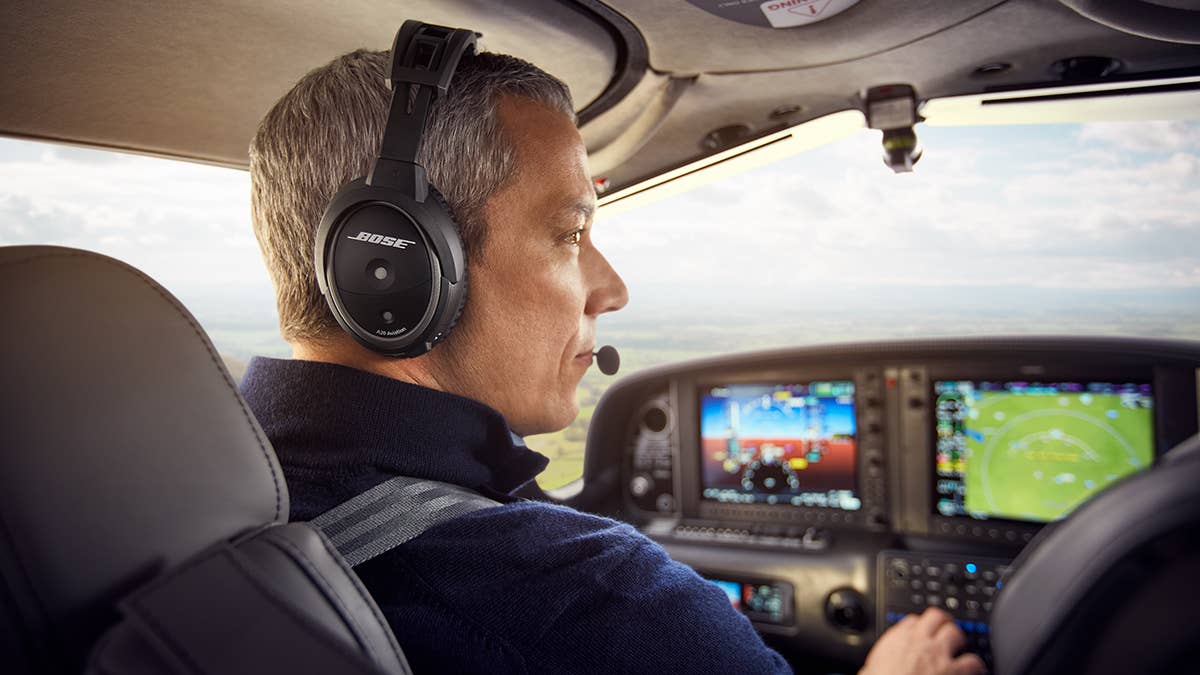
Rather than simply attempting to block annoying cockpit noise, the heart of the ANR system creates an alternate electronic signal that’s fed back into the headset’s electronics to actually cancel out the unwanted sounds. Bose
In the early days of airborne communications, earphones were created to make deciphering radio conversations for pilots easier above the roar of the engines and wind. Some of the first earphones crafted from hard Bakelite used no padding and were extremely uncomfortable to wear for long periods of time. Advances in acoustical research improved the wearing comfort of headsets by adding flexible cups that totally covered the ears, although they only muted some of flying’s more annoying noises.
While experts claimed our sense of hearing was nearly as critical to flying as a keen sense of sight, it wasn’t until about 30 years ago that engineers realized the importance of blending comfort with advances in hearing protection. Research, in fact, shows unprotected exposure to noise levels greater than 90 db, equivalent to what a human would encounter standing near a running lawn mower for long periods of time, can cause permanent hearing loss, initially in the lower frequencies outside the conversational range. Early ear-cup headphones blocked high-frequency noise rather effectively but did a poor job on low-frequency sounds, such as droning propellers. Engineers learned that simply pressing the ear cups more tightly to the person’s head did little to solve the problem.
Enter active noise-reduction technology in the mid-1980s, which is available today in several high-end aviation headsets from companies such as Bose, Lightspeed, David Clark and others. Bose created the first successful ANR aviation headset in 1989 and debuted its popular A20 model in 2010.
Rather than simply attempting to block annoying cockpit noise, the heart of the ANR system creates an alternate electronic signal that’s fed back into the headset’s electronics to actually cancel out the unwanted sounds. ANR headphones accomplish this using acoustical building blocks such as feedback and the feed-forward loop system, digital or analog processing and a full feature driver/speaker.
ANR systems operate by using one or more microphones placed near the pilot’s ears either inside or outside the headphones to accurately hear what the pilot does. In a sound feedback system, for example, that output is compared to the sound the pilot wants to hear, usually radio communications or possibly music. The cancellation signal created though amplification and filtering then builds the signal fed to the driver. With just the right amount of filtering, the result is noise cancellation that effectively reduces sound pressure on the ear. Audio engineers say noise canceling “destructively interferes” with unwanted noise.
Pilots simply call it near-perfect quiet until a wanted sound is detected and crisply delivered to the ears.
The best ANR units focus on more than simply the electronics of quietness, and employ headbands designed with soft contoured foam pads to minimize pressures on the head since ANR headsets are a one-size-fits-all creation. The best ANR headsets also offer control of the feedback level to customize a near-perfect blend of control over what the pilot eventually hears.

Sign-up for newsletters & special offers!
Get the latest FLYING stories & special offers delivered directly to your inbox






